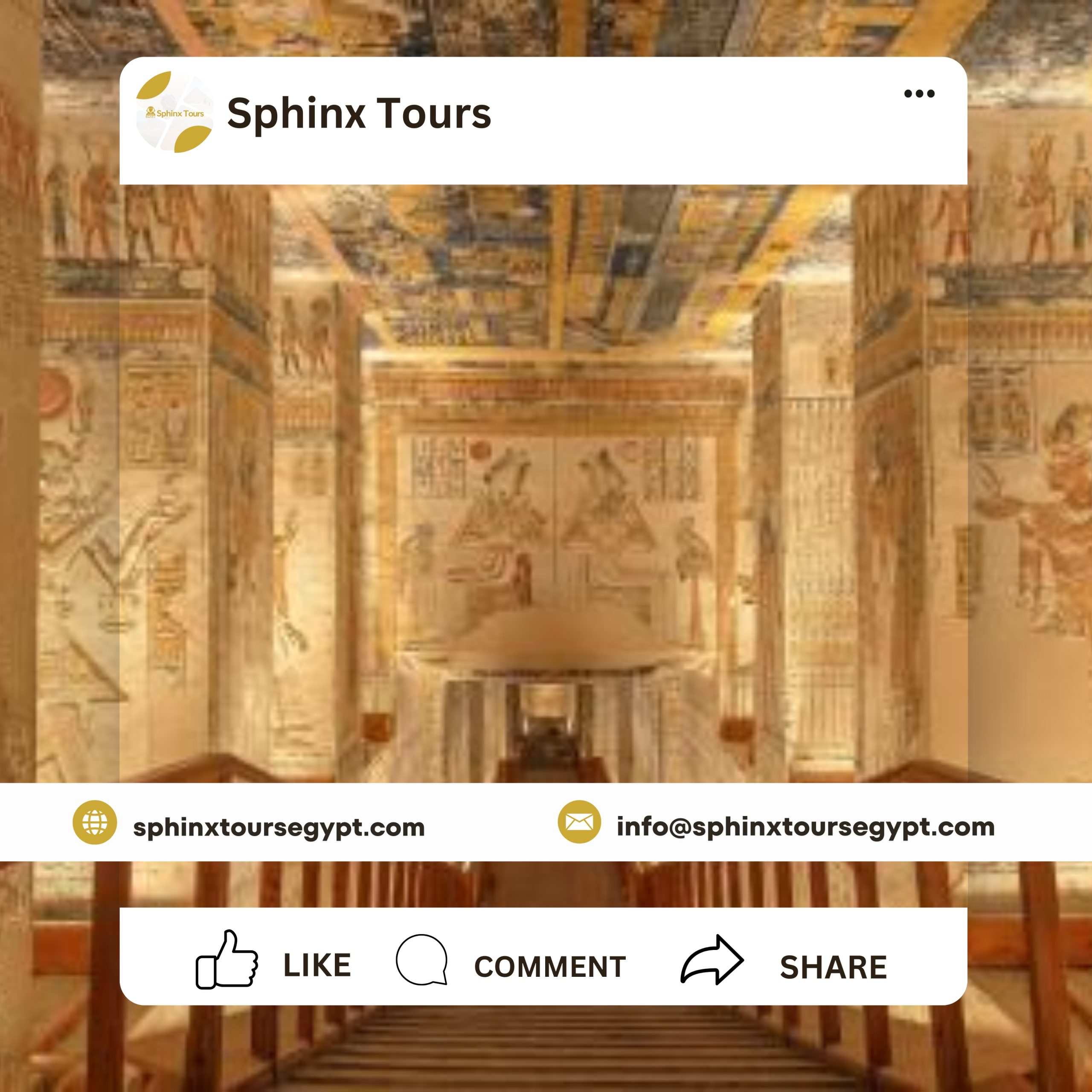The Road to the Valley of the Kings
The Valley of the Kings is a narrow, closed valley located on the western bank of the Nile, behind the rocks of Mount Thebes (Luxor). Geographically, it is a shallow ravine surrounded by highlands, and resembles a large, irregularly shaped hole in the middle of the highlands of the western plateau. It also faces the Karnak Temples, which are about three kilometers away from it, on the eastern side. The road leading to the Valley of the Kings from Luxor, after crossing the Nile, is a long road that cuts through the plain, passing by the Temple of Seti I in the village of Qurna, then bends to the west on a very curvy rocky road that cuts through the hills. The length of this road is about 5 kilometers.
Valley of the Kings
Most of the kings of the Eighteenth, Nineteenth and Twentieth Dynasties of the New Kingdom (c. 1550–1069 BC) were buried in a dry river valley on the west bank of the ancient city of Thebes (modern Luxor), hence its name, the Valley of the Kings. This name is not entirely accurate, however, as some members of the royal family other than the kings were buried there, as were some non-royal individuals, albeit of high rank. The Valley of the Kings is divided into the East and West Valleys. The eastern part is the most famous of the two, with the West Valley containing few tombs. In total, the Valley of the Kings contains over sixty tombs, in addition to twenty unfinished tombs that are no more than pits.
This site was carefully chosen for the burial of the kings; it is located on the west bank of the Nile, because the sun god descends (dies) on the western horizon in order to be reborn and rejuvenated on the eastern horizon, and for this reason the west was associated with funerary concepts, and most ancient Egyptian tombs were generally located on the west bank of the Nile for this reason.
The powerful kings of the New Kingdom were buried under the top of a pyramid-shaped rock cliff that surrounded the valley. The choice of the valley for the carving of the royal tombs was no coincidence. The pyramid was a symbol of resurrection and eternal life, and the pyramid shape was considered a sign from the deities. This area, and the summit itself, were under the control of the goddess Hathor: “Lady of the West”.
The isolated nature of this valley was another reason for choosing it as the final resting place for the kings. In ancient times, tombs were robbed – as happened to the pyramids of the Old and Middle Kingdoms – and to avoid this fate, they chose hidden tombs underground in a secluded desert valley. The first ruler of the New Kingdom to be confirmed as buried in the Valley of the Kings was Thutmose I (c. 1504-1492 BC), the third king of the Eighteenth Dynasty. According to Ini, the chief official who excavated his tomb: “I supervised the excavation of his [the king’s] tomb in privacy, no one saw and no one heard”.
Why did the Pharaohs choose this valley?
The story of choosing this valley as a burial place for the kings is worth telling. Thutmose I (1540-1501 BC), the third pharaoh of the Eighteenth Dynasty, wanted to choose his grave in an isolated valley behind the rocks of Thebes to preserve his body and protect it from the hands of thieves. He commissioned the engineer Anini to choose this place for him. Anini did not fail to mention this task, which his king had assigned to him, in the texts he wrote on his tomb, as he said: “I alone supervised the selection of the rock tomb for His Majesty King Thutmose I, without anyone seeing or hearing me.”


0 Comment